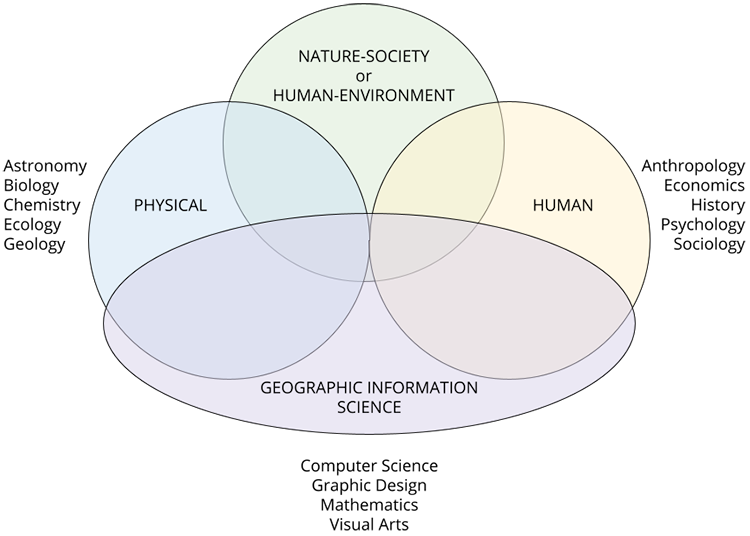Geography can be a challenging field to introduce (or reintroduce) students to. As academic disciplines go, it is among the widest in scope and among the most integrative in approach. It is also one of the oldest academic disciplines, with writings that date back to thinkers such as Eratosthenes and Strabo in ancient Greece, and the unnamed authors of the Shujing in ancient China. The word "geography" derives from the Greek geo- (earth) and -graphia (writing); to study geography is, quite literally, to describe or write about the land.
Ancient geographers wrote about everything from the physical topography of the world, to the distribution of raw resources, to the rituals and beliefs of people in different regions. This incredible breadth is still evident in contemporary geography, though today’s geographers tend to specialize in one of geography’s many subdisciplines. Broadly speaking, those subdisciplines fall into one of four main fields: physical geography, human geography, nature-society or human-environment geography, and geographic information science.

Physical geography - If you have ever looked out the window of a car or plane at the landscape outside and considered the movement of water across its surface, or the shift in tree species as you travel, you are engaging with physical geography.
Human geography - If you have ever visited another place and wondered how it developed its unique architecture, economy, history, or cultural practices, or wondered at what makes it feel different from other places, you are engaging with human geography.
Nature-society or human-environment geography - If you have ever gone to a national park and wondered what kind of fire management practices are being used and why, or if you have ever considered the ways that federal agencies respond to hurricanes, you are engaging with nature-society geography.
Geographic information science - If you have ever used an online mapping site or a GPS device to find directions to your destination, or if you have ever considered the ways that data can be presented on maps, you are engaging with geographic information science.
What unifies this vast discipline is not a specific set of texts, theories, or concepts, but rather a perspective and a basic set of questions. That is, regardless of their subdiscipline, all geographers share a spatial perspective. By this, we mean a view of the world that prioritizes the relationships between places in terms of distance or proximity, flows or movement, and connectivity. This perspective leads geographers to ask similar types of questions, namely:
- Where is this happening?
- Why is it happening there (and why—or why not—in some other place)?
- How is it happening differently there?
- Why does it share similarities (or why doesn’t it) with the same thing elsewhere?
These are the kinds of questions that all geographers tend to ask, regardless of whether our focus is on physical processes, human interactions with the environment, economic practices, or the analysis of spatial data.
Any course in geography that you take should encourage you to further develop your understanding of this spatial perspective. Ultimately, that perspective serves as a means of understanding the spatial complexities of the world. Geography’s breadth as a discipline means that there is no clear canon of texts with which all geographers are familiar. However, there are some concepts that are central to geographic inquiry. Among these are space, place, and scale. (We could expand this list to include region or connectivity or flow, but for our purposes we will stick with these three.) The remaining sections of this lesson will discuss these three concepts, as well as culture and cultural geography in conjunction with your readings for the week.